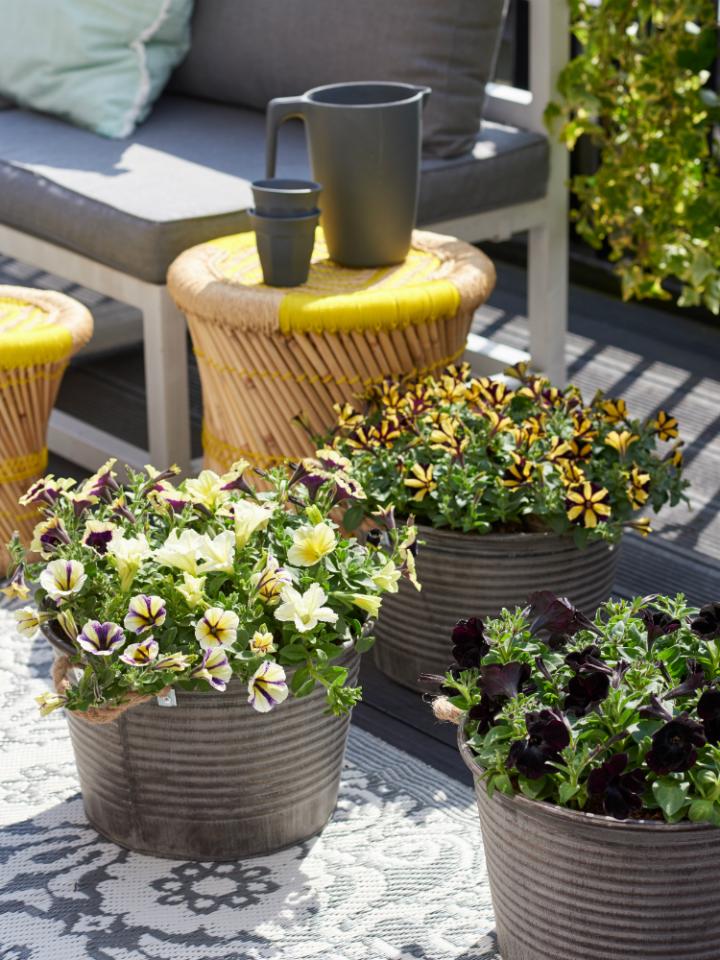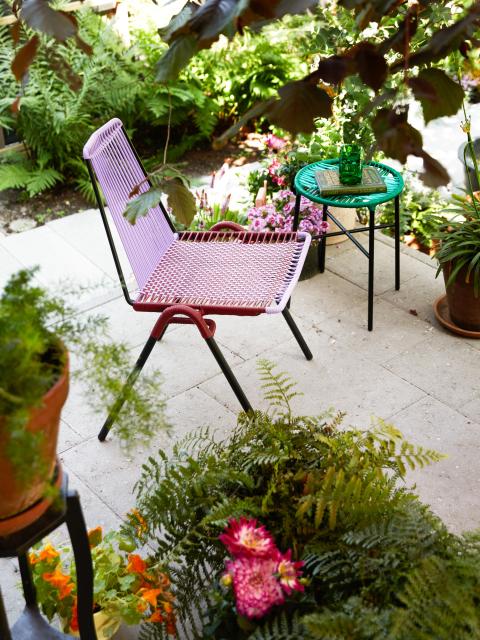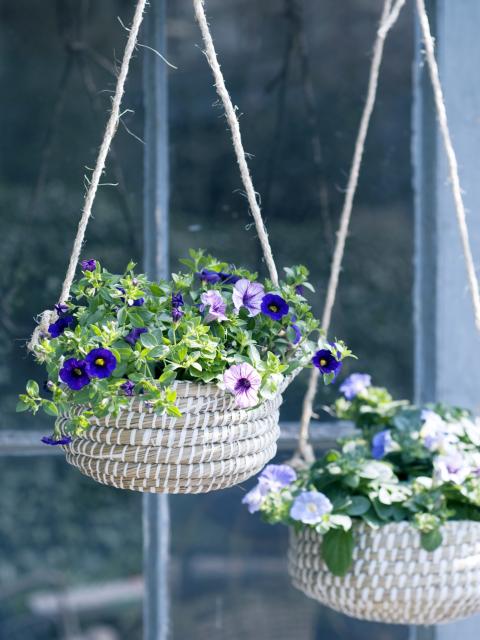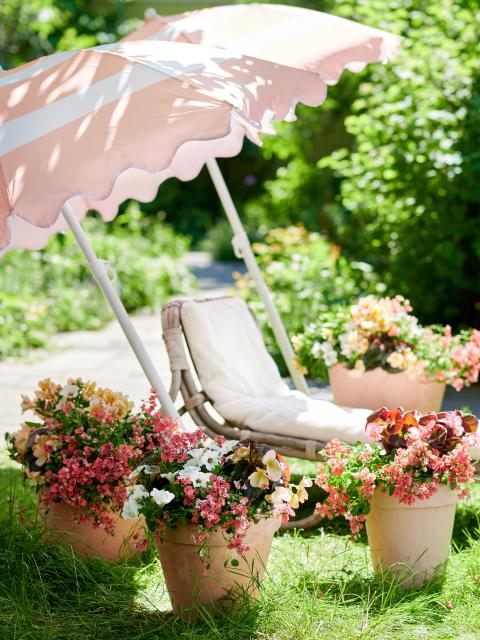COLOURS AND SHAPES
The plant blooms profusely with ever-new calyxes from May until frost. The 'jewels of summer', as they used to be called, are great for planting in the open ground. But Petunias show themselves off best in hanging baskets, containers and pots which give the flowers room to hang over the edge like a waterfall. And there's quite a lot to show off: the plant comes with striped and dotted flowers, with colour gradients, a white edge or refined markings, with colours ranging from white to crimson, deep blue purple and almost black. Petunia has it all, in single and double flowers.
ORIGIN
Petunia belongs to the nightshade family and grows wild in South America. There, 35 different species can be found, often more remarkable than the Petunia you buy at nurseries, florists and garden centres. The first Petunia came to Europe in 1823. This white flower was joined not long after by lilac and deep red Argentinian varieties. From these archetypes, the Petunia on your terrace has emerged.
TRIVIA
- The Petunia got its name in 1789 from French botanist Antoine Laurent de Jussieu (1748-1836). The plant is related to Nicotiana, known from the tobacco plant and Pétun was the local word for tobacco at the time.
- American artist Georgia O'Keeffe broke through in 1925 with a petunia painting. She had planted purple and blue petunias at her summer retreat on Lake George and was so in love with them that she captured the flowers in sensual close-ups that became a sensation.
- The petunia is part of the nightshade family (Solanaceae). This family contains many poisonous plants but also good familiars like the potato, aubergine, pepper and tomato.









